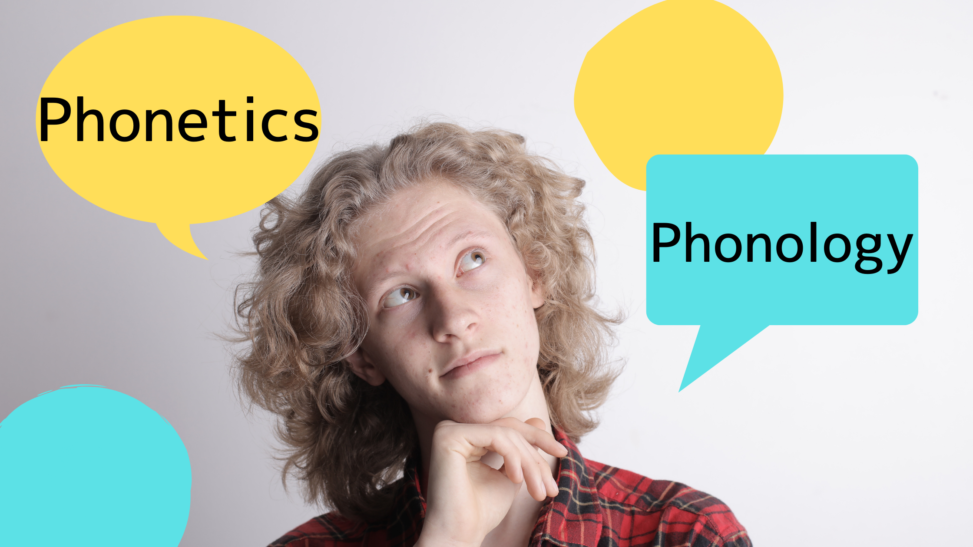There are many different fields of speech research. This article introduces the brief characteristics and differences of each field. Of course, the boundaries between those various fields are vague, and there are quite a few cross-fields research, though.
目次
Phonetics
Phonetics is the scientific exploration of the process of communication through speech.
Dr. Shigeto Kawahara’s 「ビジュアル音声学」 “Visual Phonetics” describes it as 「『人間が音声を使ってコミュニケーションとる時に何が起きているか』を科学的に探求する学問」”the study of scientifically exploring ‘what happens when humans communicate using speech’ ” [川原, 2018].
More specifically, it is the study of the three processes by which speech sounds are produced by the mouth, transmitted through the air, and interpreted, and is divided into three subfields: articulatory phonetics, acoustic phonetics, and perceptual (auditory) phonetics.
Articulatory phonetics
Speech is produced by the coordinated movement of various articulators such as lips, tongue, and throat. Articulatory phonetics is the observation and analysis of these coordinated movements.
This is a physiological research field in that it targets the movement of human organs.
Acoustic phonetics
Speech emitted from the mouth travels through the air as a series of pressure changes, that is, sparse and dense waves. Acoustic phonetics is the observation and analysis of these waves.
It is a physical research field in that it measures and analyzes waves.
Perceptual (Auditory) phonetics
Sound waves entering the ear become electrical signals and are sent to the brain. Then, they are interpreted as meaningful speech according to various mechanisms and criteria. Perceptual (auditory) phonetics is the analysis of the mechanisms and criteria for interpreting speech sounds.
It is a psychological research field in that it studies the mechanisms of cognition.
Phonology
Phonology is the study of the function and sequencing rules of sounds within a language.
They study the phonemes of a language and the rules of phonological change. Dr. Mariko Sugawara describes the field as 「音の配列や変化などのパターンを導き出す抽象化された原理や制約を探ることを目標とする分野」”a field that aims to explore the abstracted principles and constraints that guide patterns of sound arrangement and variation”[菅原, et. al., 2014].
The difference between phonetics and phonology
As above, phonetics studies speech sounds themselves, including how they are generated, how they are transmitted, and how they are interpreted. In contrast, phonology studies the knowledge of native speakers about the meaning, function, and rules of variation of their speech sounds within a given language.
The difference between them can also be captured by the difference of methodologies: phonetics is a descriptive study that reports the actual physical phenomenon of speech transmission, while phonology is a theoretical study that uses those results to explain the function of sound and the mechanism of a particular phenomenon.
Summary
This article introduced a brief classification and characteristics of voice research.
- Phonetics: scientific studies of the process of communication through speech.
- Articulatory phonetics: physiological studies that analyze the movement of articulatory organs
- Acoustic phonetics: physical studies of analyzing sound waves produced by pronunciation
- Auditory phonetics: psychological studies that analyzes the mechanisms of speech cognition.
- Phonology: studies of the function and arrangement of sounds within a language.
Articulatory phonetics and phonology will be discussed in more detail in future articles. We hope you will take a look at them as well.
References
•Liberman, A. M., Harris, K. S., Hoffman, H. S., & Griffith, B. C. (1957). The discrimination of speech sounds within and across phoneme boundaries. Journal of Experimental Psychology, 54(5). https://doi.org/10.1037/h0044417
•Shwar, I. (2007). File:Places of articulation.svg. Retrieved from Wikimedia Commons: https://commons.wikimedia.org/wiki/File:Places_of_articulation.svg?uselang=ja
•Toutios, A., Lingala, S. G., Vaz, C., Kim, J., Esling, J., Keating, P., . . . Narayanan, S. (2019, 1 17). span. Retrieved from the rtMRI IPA charts: https://sail.usc.edu/span/rtmri_ipa/
•公益財団法人日本国際教育支援協会. (2021年11月5日). 日本語教育能力検定試験の出題範囲の移行について. 参照先: JEES 日本語教育能力検定試験ホーム: http://www.jees.or.jp/jltct/pdf/R4syutsudai.pdf
•菅原真理子, 新谷敬人, 川越いつえ, 吉田優子, 三間英樹, 西原哲雄. (2014). 音韻論. 新宿区: 株式会社 朝倉書店.
•川原繁人. (2018). ビジュアル音声学. 千代田区: 三省堂.

